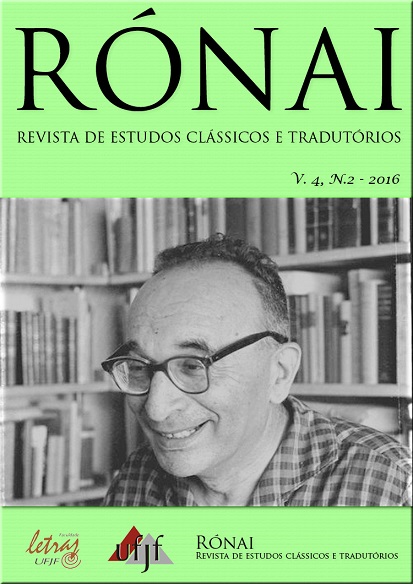Ai Weiwei and contemporary ceramics as narrator of History
Keywords:
Ceramic art, historic narrative, contemporary artAbstract
This essay presents the review of ceramic work of Chinese Ai Weiwei under the approach of witness and narrator of contemporary history, based mostly on views of scholars as Charles Jencks and Michael Archer. It is a fragment from the short course “Ceramics: narrator of History”, presented at XXIV Week of Classic Studies: frontiers and limits, promoted by Department of Language and Literatures of Federal University of Juiz de fora, Brazil on 2016. Practice of all cultures, continuously since pre-history, ceramics is a powerful instrument for register and narrative not only of Art History, but also of human history itself. Moreover, it proceeds adapted to new narratives and communication forms of nowadays.
Downloads
References
CLARK, G. Mind mud: the conceptual ceramics of Ai Weiwei. In: Ceramics in America 2011. Nova Inglaterra, EUA: The Chipstone Foundation and University Press, 2011;
JENCKS, C. Post-modernism: the new classicism in art and architecture. Nova York, EUA: Rizzoli, 1987;
LIENHARD, J. H. The Engines of Our Ingenuity: An Engineer Looks at Technology and Culture. England: Oxford University Press, 2003;
WARHOL, A. The philosophy of Andy Warhol (from A to B and back again). EUA: Harvest, 1977;
WEIWEI, A. Dropping the urn: ceramics work, 5000 BCE-2010 CE. Pensilvânia, EUA: Arcadia University & Office for Discourse Engineering, 2010.
Referências Eletrônicas:
Estadão.com.br/Internacional. Pequim liberta sob fiança o dissidente Ai Weiwei. São Paulo: 2011. In: http://www.estadao.com.br/noticias/impresso,Pequim-liberta-sob-fianca-o-dissidente-ai-weiwei,736054,0.htm. Acessado em 11 de fevereiro de 2016;
INDIANAPOLIS MUSEUM OF ART. According to Ai Weiwei: Why do you remain in China?, 2013. In: http://www.imamuseum.org/accordingtoaiweiwei/why-do-you-remain-in-china/. Acessado em 12 de março de 2016;
KLAYMAN, A. Ai Weiwei: Never Sorry (2012). In: http://aiweiweineversorry.com/. Acessado em 5 de novembro de 2015;
TATE MODERN. Tate shots: Ai Weiwei, one-to-one. Londres, Inglaterra: 2010. In: http://www.tate.org.uk/context-comment/video/tateshots-ai-weiwei-one-one. Acessado em 12 de fevereiro de 2016;
Tate Modern. The Unilever Series: Ai Weiwei: Sunflower Seeds. Londres, Inglaterra: 2010. In: http://www.tate.org.uk/whats-on/tate-modern/exhibition/unilever-series-ai-weiwei-sunflower-seeds. Acessado em 7 de março de 2016;
YOUTUBE. Ai Weiwei: a conversation. Londres, Inglaterra: 12 de outubro de 2010. In: http://www.youtube.com/watch?v=-go2H9enz7Y. Acessado em 12 de novembro de 2015.
Downloads
Published
How to Cite
Issue
Section
License
Copyright (c) 2017 Sandra Minae Sato

This work is licensed under a Creative Commons Attribution 4.0 International License.
Copyright
The authors of the published contributions agree with the following items:
1. The authors keep the copyright and convey to the journal the right of first publication, the work being licensed under a Creative Commons Attribution License 4.0 International.
2. The authors are allowed and stimulated to publicize and distribute their work online after the publication in the journal, recognizing first publication in this journal.
3. The authors of the approved works authorize the journal to distribute their content, after publication, for reproduction in content indexes, virtual libraries and similars.
For more information about Creative Commons Attribution License 4.0 International, please, go to: https://creativecommons.org/licenses/by/4.0/deed.en
Editorial exemption
The authors of the published contributions are entirely and exclusively responsible for their contents. Its content does not represent an official position of Rónai - Revista de Estudos Clássicos e Tradutórios neither of Faculdade de Letras da Universidade Federal de Juiz de Fora or their partner institutions.



